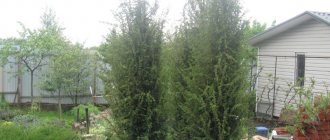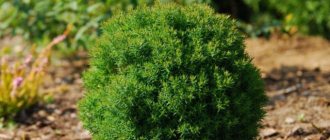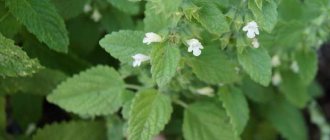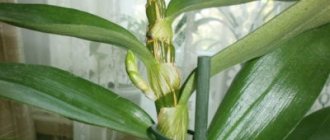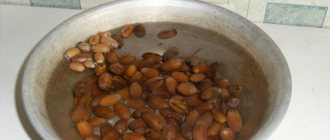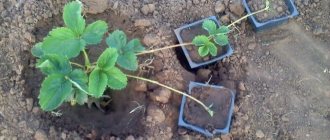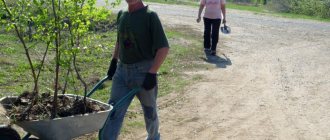The subfamily Xanthorrheaceae includes about 500 species of succulent plants. They are widespread in Africa on the Arabian Peninsula. The most famous in Russia are aloe vera (real) and aloe vera (agave), which was cultivated from an African species. For more than three thousand years, aloe-based preparations have been used for cosmetic and medicinal purposes, internally and externally. The plant is recognized as a powerful biostimulant.
A description of aloe, its healing properties, as well as contraindications can be found in many medical works, however, even today the properties of the plant are studied by modern scientists. These flowers can be seen in the collections of many connoisseurs of the beauty of indoor plants. According to experienced flower growers, aloe is unpretentious, does not require complex care, and fits perfectly into any interior.
However, beginners have a number of questions about growing it. For example, how does a plant reproduce, how to plant an aloe shoot without a root? In this material we will try to provide answers to these questions.
Popular varieties of aloe
As we have already said, in the home flower beds of our country the most common tree type of plant is agave and aloe vera. With good care, tree aloe can reach a height of two meters or more. Its dense and powerful stem eventually becomes covered with a woody layer. The stem has leaves with a glossy dense plate. They are oval, elongated-lanceolate, forming a rosette in the upper part of the tree.
The leaf blade is dark green, sometimes with a bluish bloom. There are plants with patterns on the leaves. Under the thick skin there is a juicy pulp with a very bitter taste. The juice of the plant contains substances that irritate the mucous membrane of the digestive system. Under natural conditions, the plant blooms with yellow or orange flowers, which are collected in panicles or brushes. In indoor floriculture this happens extremely rarely.
Main reasons for transplantation
Aloe is a plant that does not like a small pot. It gradually develops a wide root system, and a cramped pot will be lethal for it. Therefore, aloe needs to be transplanted into another pot correctly and on time.
Aloe indoors
Aloe transplantation is carried out for the following reasons:
- Aloe should renew itself and take on a beautiful appearance. Decorative properties largely depend on how wide the pot it grows in. In small pots, the flower will wither and its roots will rot if not watered correctly.
- At times, a large number of lateral shoots grow around the central bush. It is recommended to replant it so that the shoots do not take away its juices. Replanting rejuvenates the plant and makes it more resilient.
- The most common reason for repotting is when the pot is not the right size for the plant. The flower must be replanted immediately if the roots begin to make their way through the drainage system.
- As the aloe grows, the soil becomes depleted. If it contains few nutrients and microelements, growth gradually slows down and the lower leaves die off. The plant gradually loses its decorative properties. Aloe will be beautiful if the soil is enriched with nutrients and valuable microelements.
- If watered incorrectly, the roots gradually begin to rot. In this case, the flower needs to be replanted urgently.
Aloe vera
In various sources, in the description of aloe vera (or Barbados), which came to us from the Canary Islands, it is presented as a small plant - no more than a meter in height at home, without a main stem, with fleshy leaves that are covered with spines on the sides, growing from basal rosette. In nature, this species can reach four meters in height.
The leaves have fleshy and juicy pulp. The flowers are quite large, six-membered, located on thin pedicels, forming a cylindrical brush. In indoor conditions, with proper care, aloe vera can bloom in February-March. This happens quite rarely.
Caring for the plant during the rooting period
During rooting, it is necessary to provide the flower with the necessary care. This will allow aloe to quickly adapt to new conditions and begin to develop.
It is recommended to adhere to the following rules:
- All small flowers are protected from direct sunlight, this will help avoid burns.
- During the warm period, the flower is taken out into the fresh air. First for a short time, gradually accustoming him to new conditions. When planting in summer, it is better to perform such actions a year later.
- When planting in winter and autumn, flowers are extended daylight hours with the help of lamps and lamps.
- Be sure to maintain watering, do not allow the soil to dry out, and monitor the condition of the plant. Excess moisture is also dangerous for the flower and can cause rotting of the root system.
- The room with pots is often ventilated, but make sure that the incoming air is not too cold.
- The leaves are periodically wiped to remove dust and dirt.
- After several months, the plants begin to be fertilized with special fertilizers.
Compliance with such rules will allow the plant to quickly adapt and not die.
Sprouts with roots
Features of aloe propagation
Before you learn how to plant an aloe shoot without a root, you should familiarize yourself with the main methods of its propagation. Caring for this crop and its reproduction should be as close to natural as possible. The soil for the plant must be breathable. Therefore, gravel, brick chips or sand are added to the soil. It is necessary to follow the rules of watering: in summer it is enough to moisten the soil once a week, and in winter - after the soil has dried out.
The main methods of propagating a homemade aloe plant include the following:
- Basal shoots or children at the base of the shoots.
- Propagation of aloe vera, like any other species, by pieces of leaves or cuttings.
- The apex (parts of the stem with leaves).
Conditions of detention and further care
Properly replanting aloe is only part of the job. It is very important to properly care for the plant in the future, especially in winter. Transplantation at this time is already fraught with losses, especially if further maintenance measures are not followed.
It is important to pay attention to the room temperature and lighting throughout the day. In order for the root system to quickly recover and adapt, the temperature on the thermometer should be approximately 20–23 °C. If the temperature is lower, development will be delayed or stop completely.
During the recovery period, aloe needs long daylight hours. To provide 14 hours of full light, a phytolamp is used, but ordinary fluorescent lamps are also suitable. They should be at a certain distance, about 25 cm above the plant.
When signs of growth appear, you can apply fertilizer in the form of a mineral complex. The store sells special fertilizers for succulents. An excess of nutrients is even more harmful than their deficiency, so the norm must be carefully regulated. Watering during the adaptation period should be moderate and minimal, especially if putrefactive processes were noticed during transplantation.
Reproduction in different ways
Let's consider the listed methods in more detail. Reproduction by children or shoots is the easiest way, since in this case the shoot has roots, which greatly simplifies the task. The shoots are located at the base of the roots. It is necessary to carefully, trying not to damage the roots, remove the small bush from the pot and transfer it to a separate container with a moistened substrate.
The young plant requires moderate watering, which is done every two days. Feeding with nutritional compounds for succulents is carried out twice a month.
Planting the “babies”
This is the name given to young shoots growing from the roots. This method allows you to grow several bushes from the children surrounding the mother plant. In order for the agave to take root faster, you need to know how to grow aloe from a shoot. When growing, you must follow the basic rules, which are as follows:
- replant shoots that have at least 3 young leaves;
- children are removed during replanting of an adult plant for better survival;
- for planting, the children are cut off from the root using a sharp knife, leaving a few roots on the shoot.
Leaves
Medicinal aloe (we posted the photo in the article) can be propagated using a leaf. To do this, separate a healthy leaf at the base of the plant. Place it on a cloth or paper napkin and place it in a dark place until the cut dries.
Moisten the pre-prepared soil mixture. The place where the sheet is cut is treated with charcoal or activated carbon, crushed into powder. Then it should be placed at a depth of no more than three centimeters. The soil should be constantly moistened until rooting.
Diseases, pests
Agave can be affected by dry or gray rot. Diseases manifest themselves as drying or deformation of the leaves and rotting of the roots. If these signs are detected, the agave needs to be urgently transplanted.
Aloe can be affected by the following pests:
- Spider mite. It is difficult to notice due to its small size. The main sign is that the finest cobwebs appear on the leaves. The leaves turn pale and dry. At a late stage of the disease they become scarlet.
- Scale insects inhibit the process of photosynthesis. Red spots appear on the leaves.
- A sign of a mealybug is a coating of leaves.
Pests can be controlled using special antiparasitic drugs.
Aloe is an unpretentious, beautiful and useful plant. If you take good care of it, there will never be any problems with it. Its longevity will depend on proper transplantation.
Cuttings
Now let's figure out how to plant an aloe shoot without a root. For this, shoots are used that are located on the side of the mother plant. Using a sharp, pre-disinfected knife, they are cut off at the very base. In this case, the shoot must have at least three pairs of leaves. The cuts must be immediately treated with crushed charcoal. After this, the shoot is placed in a dark place for five days to dry.
This can be done outdoors or in the refrigerator, wrapped in paper. Once a crust appears on the cut, you can begin planting. But how to plant an aloe shoot without a root? Since aloe is a succulent, you should not root the cuttings in water - the shoot may simply rot. It is more expedient to do this in the soil.
To avoid excessive soil moisture, good drainage is necessary to prevent moisture from accumulating in the soil. The cuttings must be placed in the ground so that the lower leaves barely touch the surface. Fine gravel can be sprinkled on top of the soil to increase the stability of the flower. Then the plant is watered moderately and placed in a warm, bright place: aloe does not need high humidity, but it needs sunlight for better development.
The roots will appear within 2-4 weeks. During this period, proper watering of the plant is important. In this case, it is advisable to adhere to the basic rule of gardeners - it is better to underfill than to overfill. After all, as we have already found out, this crop can withstand long droughts and does not tolerate waterlogging. If you poured gravel on top of the soil to stabilize the cutting, then watering is carried out even less frequently, since in this case it acts as mulch, which reduces the volume of evaporated liquid.
The first leaves emerging from the rosette indicate that the rooting of the cutting was successful. After this, the plant needs a transplant.
Exclusive option
If you continue to search for information on how to plant an aloe bush for yourself without roots in different ways, you need to know that this can be done from seeds.
But the process is incredibly complex. Due to the fact that the color produced by the plant in winter is incredibly difficult to obtain at home. It looks like a long arrow with miniature flowers. And for this we should create a truly African winter. But, if the flowers have already grown on aloe, it means that God himself orders propagation to be carried out by seed. As a last resort, aloe seeds can be found in flower shops. The substrate for planting them is the same as described above, but it must be sterilized. Sowing is done in late winter or early spring. If the containers are ceramic or terracotta, they should be pre-soaked and dried. The seeds laid out on the surface of the damp soil mixture are sprinkled with sand. Next, greenhouse conditions are created. Ventilation, sunny side for placing trays for growing, temperature above 20 degrees Celsius - all this remains the same type of regime for growing aloe. As soon as 2–3 leaves are formed on the stems, they can be transplanted into pots.
It doesn’t matter what it’s from, but you can germinate aloe, even without roots. This should be done not only for the sake of beauty in the house, but also to preserve the health of family and friends, based on the special properties of the plant.
How to replant aloe at home?
When grown indoors, these plants can reach quite impressive sizes, making them difficult to replant. To transplant such a flower, you need not only to know how to do it, but also to have certain skills.
Remove the plants from the pot, being careful not to damage the roots. There are two ways to do this. Take the pot in your right hand and turn it over, holding the bush with your left hand. If the earthen lump does not separate, then tap the sides of the pot with your palm.
You can push a flower out of a pot of soil using a wooden stick. To do this, insert it into the drainage hole and squeeze out the earthen lump. Clean the roots from the old soil. Remove damaged and diseased roots, and sprinkle the cut areas with charcoal. Prepare the necessary container, which should be of such a size that the roots do not reach its walls by 2 cm and the bottom by 1.5 cm. A layer of expanded clay is poured onto the bottom and sprinkled with soil to a depth of 1.5 cm. Plant the plant in the center of the pot, straighten the roots and cover with soil.
To keep the flowers well, compact the soil. It is advisable to cover the top layer of soil with expanded clay or fine gravel. For the first 5 days, the transplanted plant does not require watering and must be kept in the shade. If after a week the aloe sways in the pot, it means that the roots were damaged during transplantation and the plant did not take root. In this case, the procedure is repeated.
Requirements for soil mixture
The soil should be light and loose, allowing the roots to access air. The composition is a mixture of clay-turf soil and forest deciduous soil with sand in equal proportions. The addition of charcoal or peat mixture should not exceed a fifth of the soil.
Small stones are placed at the bottom of the pot for a drainage layer, which helps remove excess moisture from the pot. These are fine gravel, sea pebbles, expanded clay, and sawdust.
Step by step transplant instructions:
- on the eve of replanting, the flower is watered abundantly for easy release from a cramped pot and separation of salt-depleted soil from the root system;
- the agave is carefully removed from the flowerpot, tilted over the prepared place on the table to spread the soil and further divide the bush into individual plants;
- fragile fleshy leaves require careful handling when planting in a new place for further growth;
- the soil around the root system should be held in a lump, facilitating faster rooting in a new location;
- the roots are inspected, rotten ones are removed and the plants are sorted according to the size of suitable flowerpots for each succulent;
- prepare a drainage layer along the bottom with a thickness of 5 to 10 cm, depending on the size of the new pot, consisting of fine gravel and sawdust.
- The separated aloe is placed on a small layer of soil mixture and covered with prepared soil to the edges of the flowerpot, slightly compacting the moistened soil;
- to retain moisture before aloe takes root, the top layer of soil is laid out with a layer of expanded clay stones;
- After transplantation, the succulent is removed to a shaded place for several days without watering.
